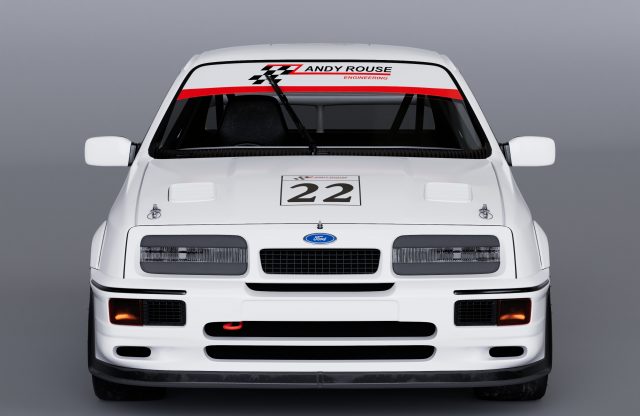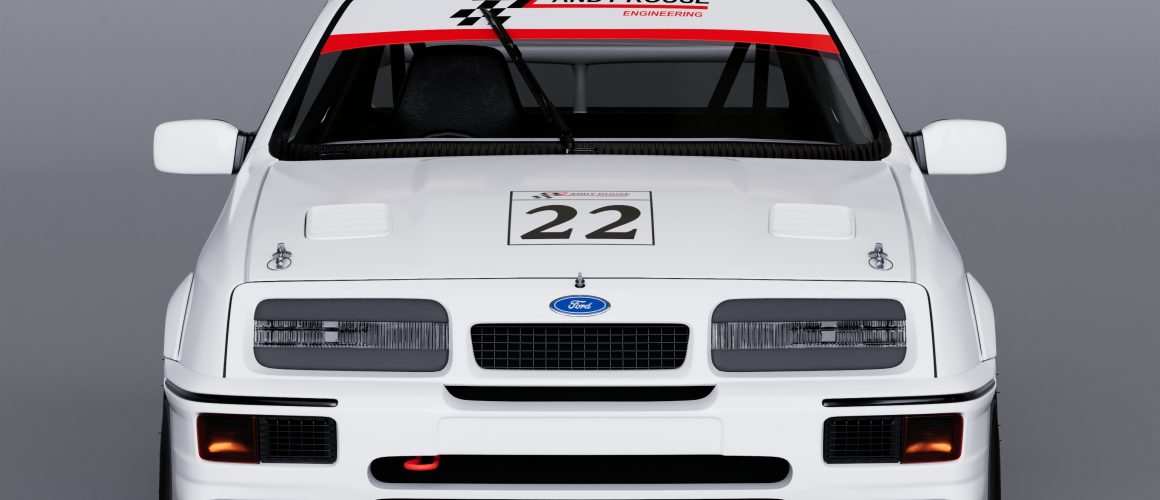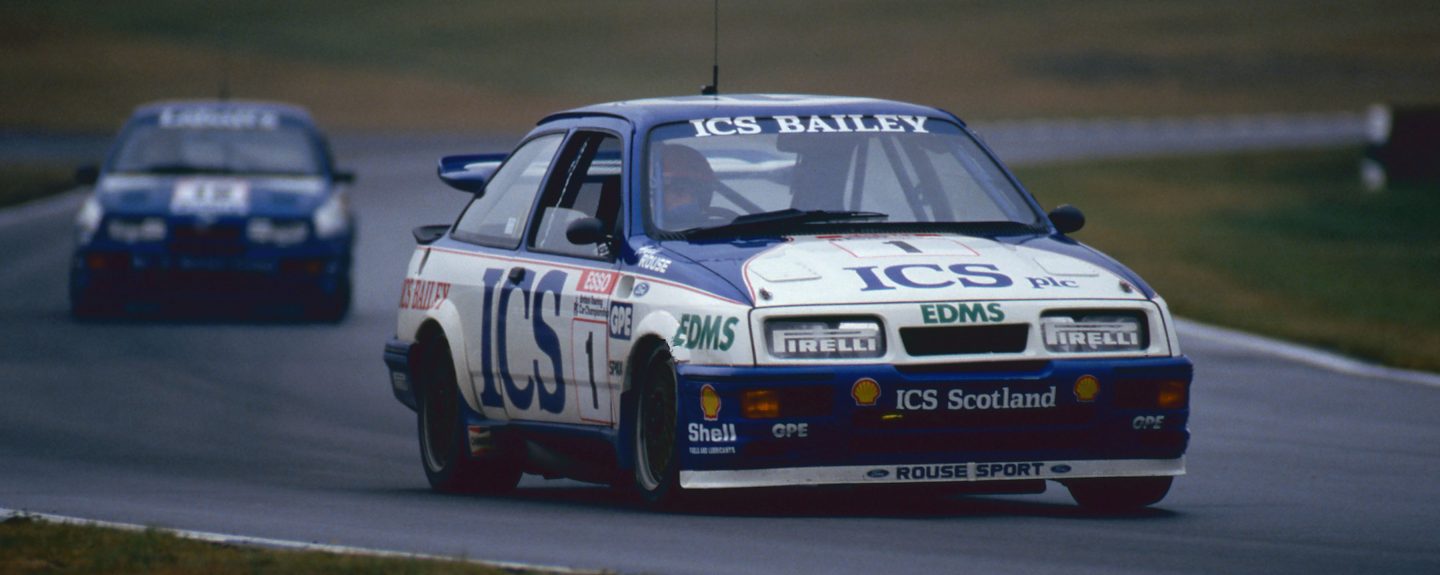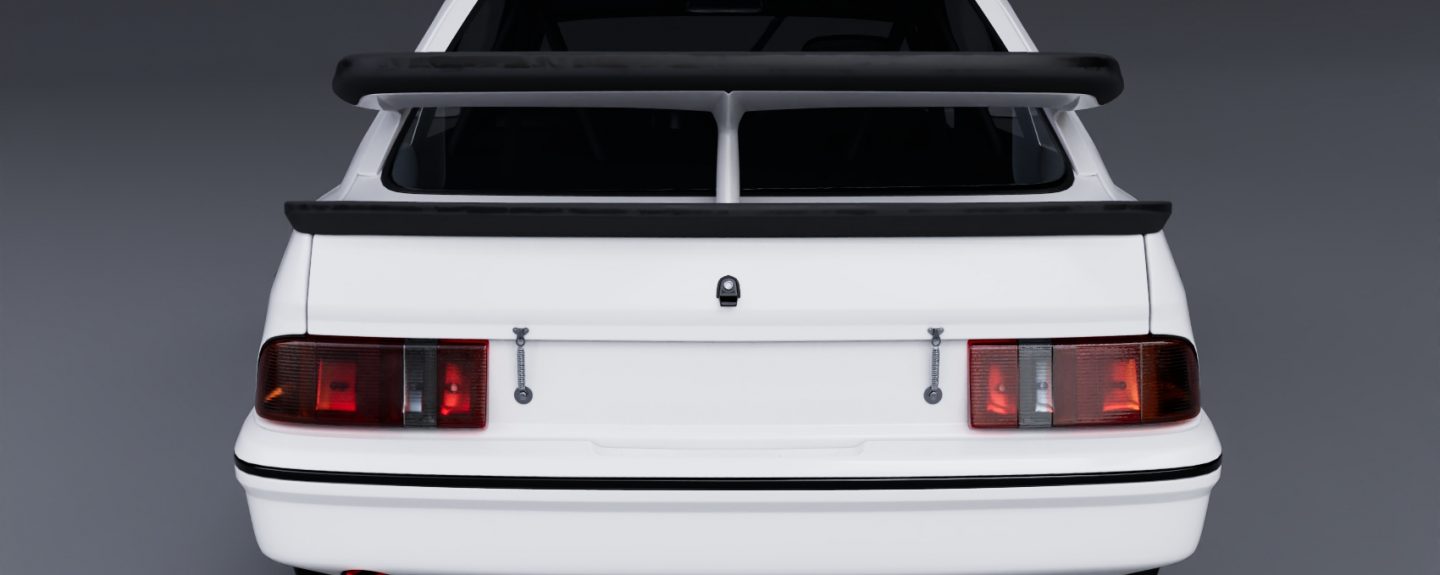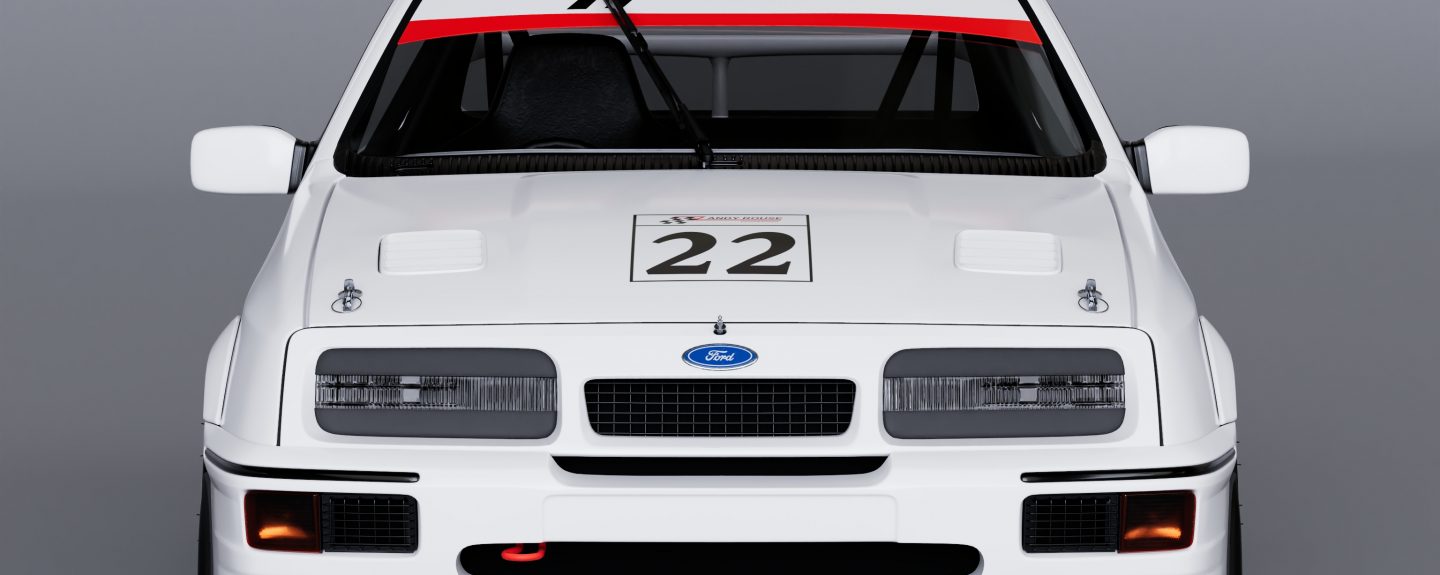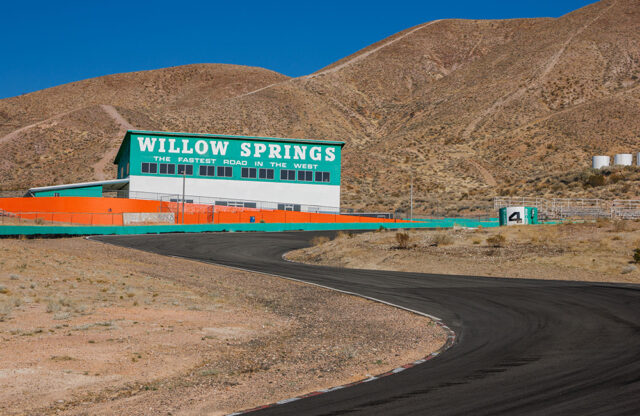WORDS: nathan chadwick | PHOTOGRAPHY: Jakob Ebrey
Group A touring car regulations gave us some of the most exciting racing in tin-top history, and spawned a line of exceptional and highly sought after road-going homologation specials.
Because the cars had to be based on 5000 road-going models, with a further 500 set aside for special editions to homologate race-friendly parts, it’s arguable that the Group A formulae did much to help motor sport feel more tangible to the spectator than the fire-breathing Group B monsters that came before them.
For much of the Group A era, the competition was really between only two cars – the BMW M3 E30 and the Ford Sierra RS500 Cosworth.
The M3 was naturally aspirated, lighter and had a nimbler chassis, allowing it to dominate its class. The Ford was all about outright race wins, with up to 530bhp flowing through the rear wheels, and even more reported in Australian racing towards the end of its career. The oft-sideways antics of this bewinged, 180mph machine that looked like an ’80s rep car on a steroid binge have made it a legend, with a passionate following that persists to this day through Historic racing.
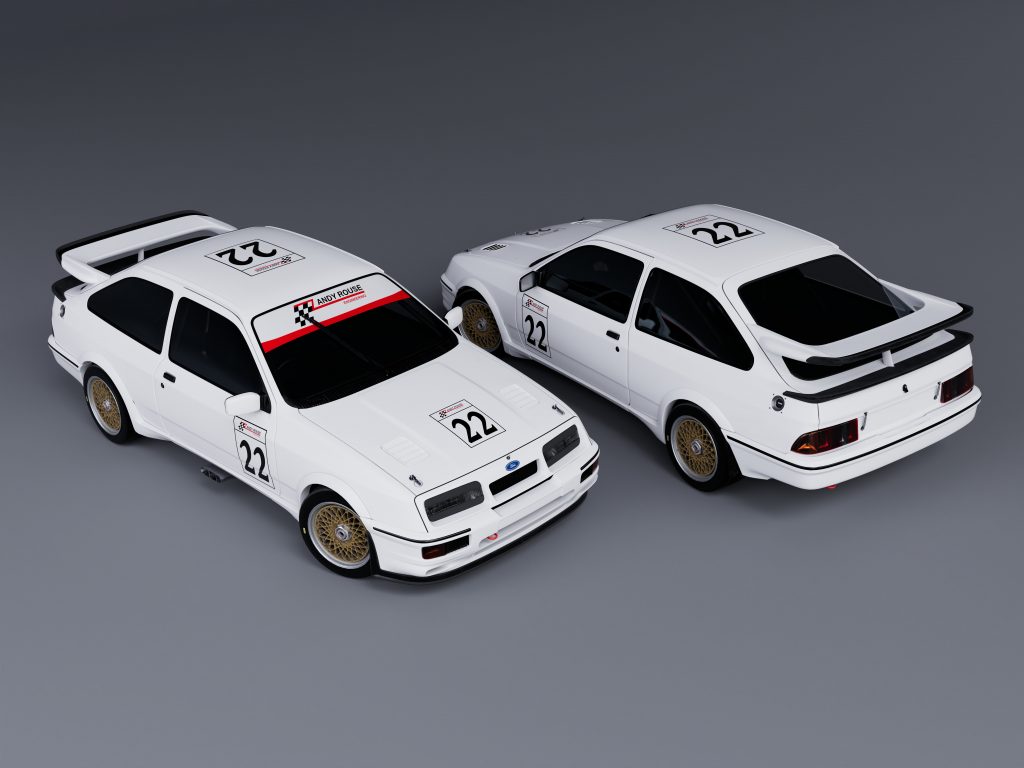
So deep is that passion that prices for original RS500 race cars have surged well into six figures, particularly if the chassis was prepared by one of the era’s pre-eminent specialists Dick Johnson Racing, Eggenberger and Andy Rouse Engineering.
Now Andy Rouse is putting his name behind three Continuation racing cars built by CNC Motorsport AWS, run by Alan Strachan – a former employee of Andy Rouse during the 1990s.
Each car costs £185,000 and will be built to original specification, whether that be the Ford-derived parts, or the Rouse-specific items such as the front suspension uprights, rear trailing arms, fuel-tank enclosure and side-exiting exhaust. The engine will be even more potent than back in the car’s 1987-1990 European pomp – each example will come with a 575bhp Cosworth YB engine tuned with input from Vic Drake, the man who built more than 100 RS500 engines for Andy Rouse Engineering over the years.
The first car will be built around an unused 909 Motorsport shell that’s been in storage for three decades, while the other two will use original bodyshells made to Rouse’s exacting standards – all three will be supplied with HTP papers for historic racing.
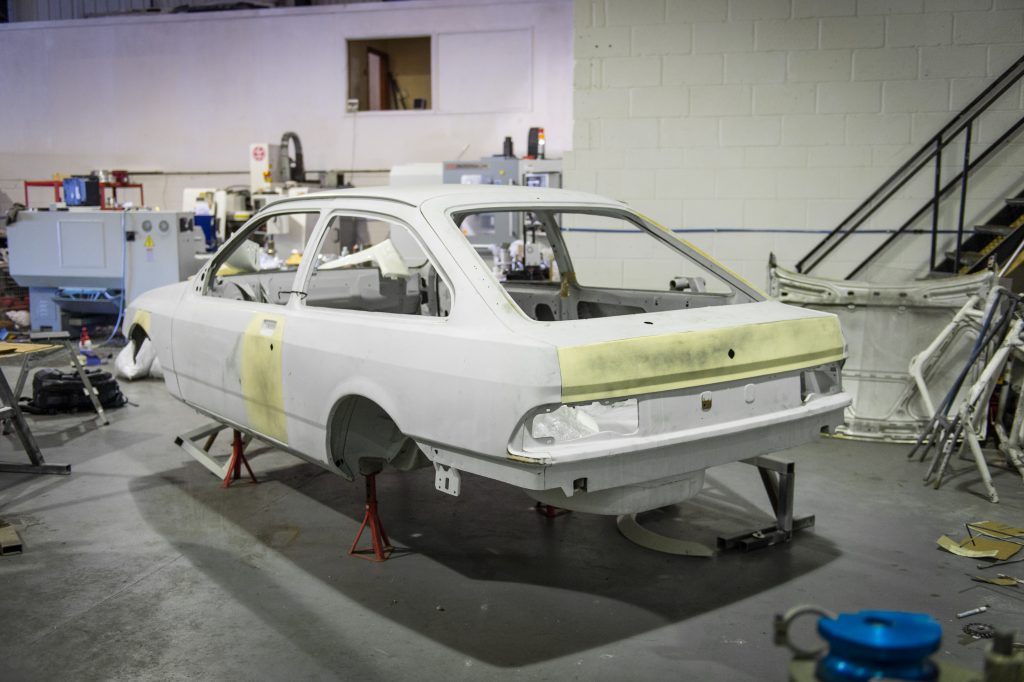
We spoke to Andy Rouse about his memories of the RS500 from the unique position of being an engineer and driver – but the story doesn’t begin with the Sierra Cosworth. No, you need to look back to a peculiar quirk of Ford’s global production ideas in the early 1980s. “We’d just won the championship with the Rover Vitesse, and Ford was beginning to promote the Sierra,” remembers Andy. “They asked us if we’d be interested in running the Merkur XR4TI, principally to develop the chassis for the Sierra Cosworth.”
The Merkur XR4Ti was essentially a Ford Sierra for the American market dressed in the clothes of the European XR4i, but where that car used a 2.8-litre V6, the Merkur used a turbocharged 2.3-litre turbocharged four-cylinder called the Lima, which was also seeing use in the contemporary Mustang. Andy promptly dominated the British Saloon Car Championship that year, with 14 victories in 1985. It wasn’t quite as simple as that, however. “The biggest challenge was getting the engine ready, it was pretty unsophisticated,” says Andy. “The chassis was a bit disappointing – you couldn’t get it as low as the Rover. That made it a bit tip-toey, but it was a case of getting used to it and making the best of it.”
With all the lessons learned from the year with the Merkur, the Sierra Cosworth, and later RS500, was a great step forward, using a Cosworth-developed 2.0-litre Pinto four-cylinder. “The RS500 had bespoke suspension geometry that was made for the road car – the mounting points, with wishbones onto the chassis so it had less camber change, made it generally more suited to the racing cars,” Andy explains. “We developed our own suspension – the Ford factory team, Eggenberger, went a different direction with an aluminium wishbone; we went with steel.”
Eggenberger built an anti-squat system, but Rouse found that rear-end squat allowed the RS500 to deliver its horses to the Tarmac better. “That why our cars were better than theirs,” Andy laughs. “The rear wheelarches were pretty restricted, and you needed a big tyre to get the traction; the ride height was almost the same as a standard road car’s. The squat was the best compromise we could come up with.”
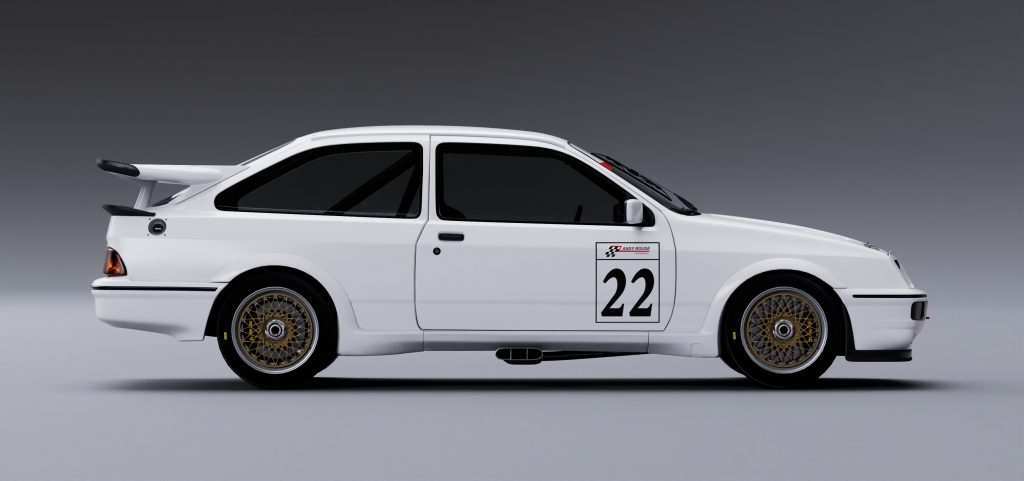
The pace of development was largely concentrated on the RS500’s engine. Without the turbocharger, the standard 2.0-litre Pinto block delivered around 90bhp – getting five times that with the blower attached, and reliably, was the biggest challenge. “The more we increased the power, the less reliability – so it was a balance between cranking up the horsepower and keeping it all one piece,” Andy says. “We could do long-distance races by turning down the boost a bit.”
Andy says he was running 2.2 or 2.2 bar in qualifying, which was enough for 530bhp.
Such huge horsepower made it a tricky car to drive. “It had an excess of power over grip, and getting the chassis to use the power properly was quite difficult,” Andy explains. “It would understeer into the corner, so late braking was a no-no – it was a case of get off the brakes early, get on the power early and balance it on the right foot.”
A further complication – other than tyres far less advanced than today’s compounds, leading to premature wear – was a quirk to Andy’s cars in particular. “Because they were right-hand drive, you were sat right behind the turbo – the floor would be 60 degrees centigrade within ten laps.”
Despite these challenges, Andy has fond memories of the car. Due to the confusing class structure of the British Touring Car Championship (or the British Saloon Car Championship, as it was known then), he didn’t take overall honours but claimed the Class 1 title from 1987 to 1989. Although the 1990 car was his favourite, because it had all the latest developments, the Kaliber cars are among his most popular. “They were a great sponsor – they put a lot of effort into promoting the car and the product,” he says. Indeed, comedian Billy Connolly even toasted one of Andy’s most famous victories, at Brands Hatch in 1988, in a memorable TV advert. “I never got to meet him at the time, though. I wish I had.”
Fast-forward more than 30 years, and Andy can look back with pride. His racing team built 30 cars and 100 engines, and he drove alongside some of the greats, including Peter Brock at the Bathurst 1000 in Australia. He also managed to get one over the factory Eggenberger Ford team at the Silverstone TT in 1988, denying it the drivers’ title and handing it to Roberto Ravaglia’s BMW by storming to overall victory.
However, with the onset of modern technology, what would have made the difference back in the day? “Fuel – it was a real challenge getting quality fuel,” explains Andy. “We mixed our own, a lot of teams did, but it was the limiting factor for the engine output.”
The first car is due to be finished just after Christmas, but Andy is not sure whether he’ll get behind the wheel. “I might have a couple of laps just to remind myself what it used to be like.”
Andy won’t be having a car for himself, but he’s keen to track down one of the rarer RouseSport 304-Rs his racing team built. These road cars were based on the Ford Sapphire Cosworth 4×4, and benefited from more power and less laggy turbo, and hand-built, luxurious trim. “I wouldn’t mind getting one of those back.”
If you know of one for sale, do get in touch…
You can follow the build here.
If you liked this, then why not subscribe to Magneto magazine today?
